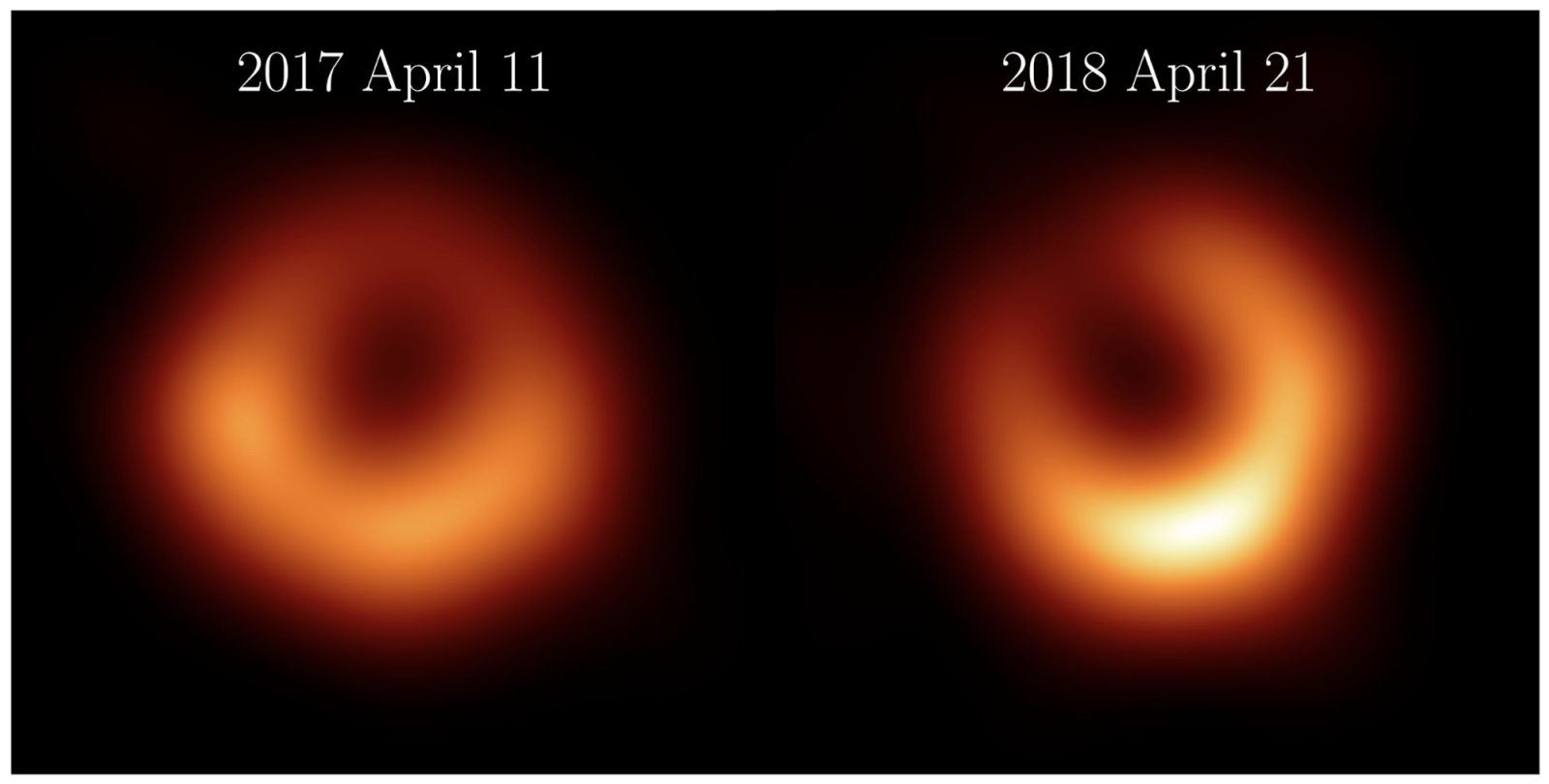The lingering shadow of the black hole: new spectacular image of M87*
Follow us on Google News (click on ☆)

Side-by-side comparisons of M87* in 2017 and 2018 showing how the bright spot in the ring of matter around the black hole has moved
Credit: EHT Collaboration
The new image displays a golden luminous ring, representing matter heated to extreme temperatures orbiting around the black hole. At the center of this ring, a dark shadow remains visible, in line with the predictions of Einstein's gravity theory.
The confirmation of the presence of this ring in an entirely new dataset is a vital milestone for the scientific collaboration. It indicates that this is indeed the shadow of a black hole and the matter orbiting it.
Located 55 million light-years from Earth, M87* has a mass equivalent to about 6.5 billion suns. It is gradually consuming the surrounding matter. The powerful magnetic fields around the black hole heat the matter it does not absorb and propel it at speeds close to that of light.
The 2017 and 2018 images of M87* are remarkably similar, demonstrating that the diameter of the light-trapping surface, known as the event horizon, remains constant. This supports the theory that the diameter of a black hole depends on its mass.
A side-by-side comparison of the images reveals that the brightest point in the ring around the black hole has rotated 30 degrees counterclockwise, confirming the turbulent matter's variability around the black hole.
This new image paves the way for future observations. The EHT has continued to monitor M87*, with additional observations in 2021 and 2022, and more planned for 2024. These observations will enable astronomers to better understand the dynamics of black holes and test new theories in astrophysics.